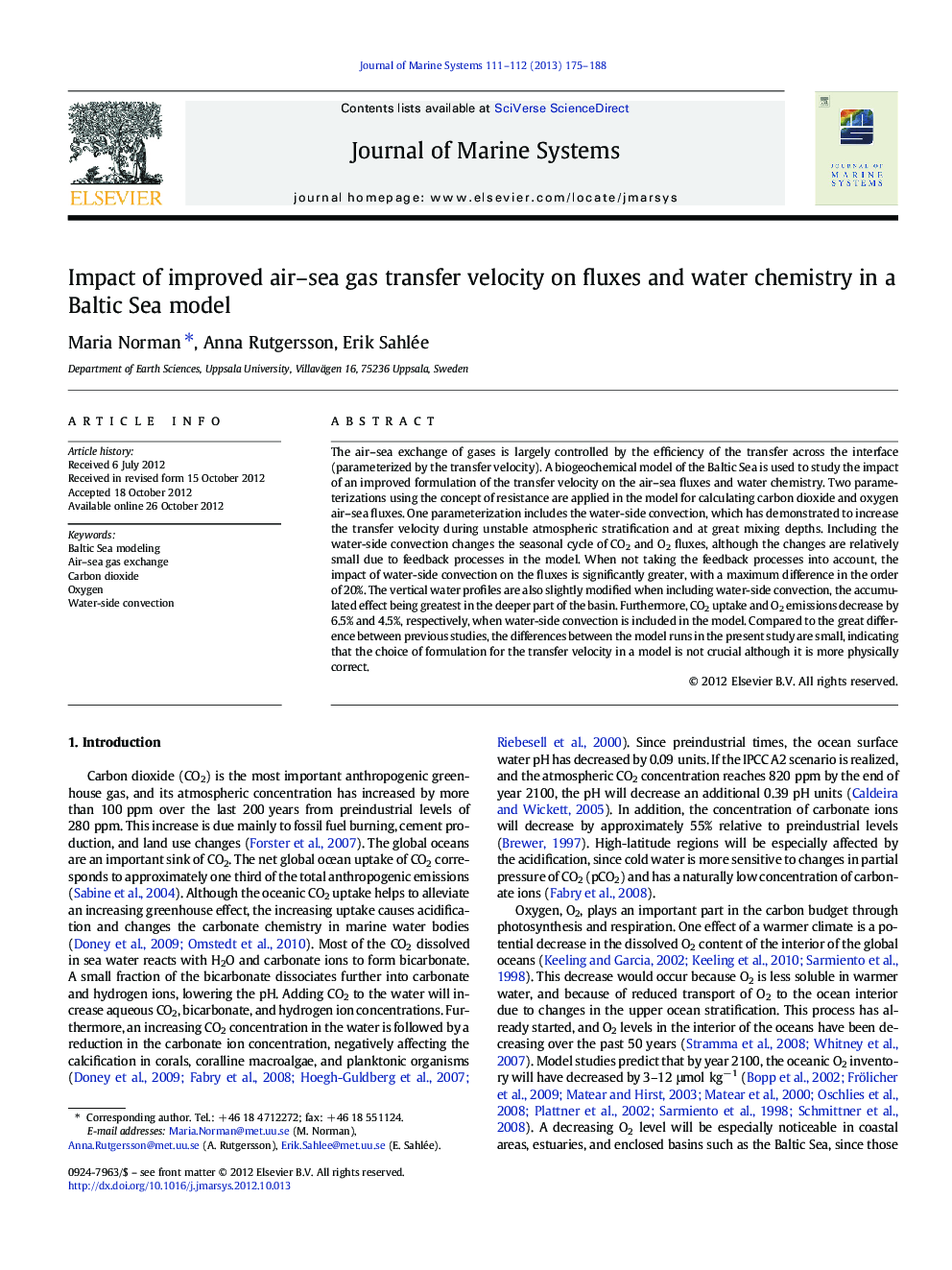| کد مقاله | کد نشریه | سال انتشار | مقاله انگلیسی | نسخه تمام متن |
|---|---|---|---|---|
| 4548180 | 1627311 | 2013 | 14 صفحه PDF | دانلود رایگان |

The air–sea exchange of gases is largely controlled by the efficiency of the transfer across the interface (parameterized by the transfer velocity). A biogeochemical model of the Baltic Sea is used to study the impact of an improved formulation of the transfer velocity on the air–sea fluxes and water chemistry. Two parameterizations using the concept of resistance are applied in the model for calculating carbon dioxide and oxygen air–sea fluxes. One parameterization includes the water-side convection, which has demonstrated to increase the transfer velocity during unstable atmospheric stratification and at great mixing depths. Including the water-side convection changes the seasonal cycle of CO2 and O2 fluxes, although the changes are relatively small due to feedback processes in the model. When not taking the feedback processes into account, the impact of water-side convection on the fluxes is significantly greater, with a maximum difference in the order of 20%. The vertical water profiles are also slightly modified when including water-side convection, the accumulated effect being greatest in the deeper part of the basin. Furthermore, CO2 uptake and O2 emissions decrease by 6.5% and 4.5%, respectively, when water-side convection is included in the model. Compared to the great difference between previous studies, the differences between the model runs in the present study are small, indicating that the choice of formulation for the transfer velocity in a model is not crucial although it is more physically correct.
► Fluxes of CO2 and O2 estimated with a biogeochemical model.
► Model simulations include water-side convection in the transfer velocity.
► Model feedback processes act to reduce the effect of the new parameterization.
► Without feed-back, the fluxes are changed up to 20% due to water-side convection.
► With the new parameterization, the Baltic Sea is less of a sink of CO2.
Journal: Journal of Marine Systems - Volumes 111–112, February 2013, Pages 175–188